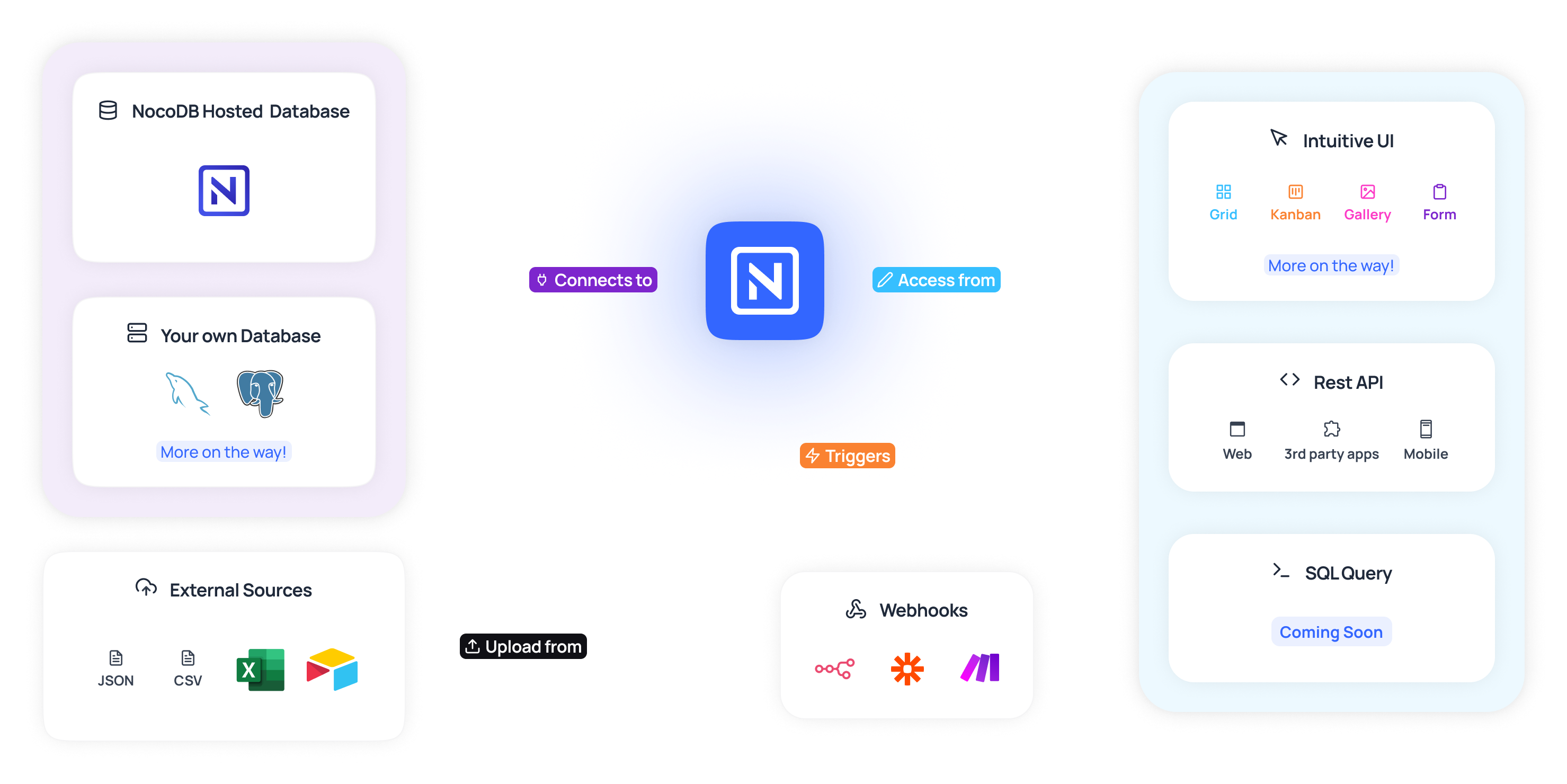Open the Power of No-Code for Open System Data Source Production
Open the Power of No-Code for Open System Data Source Production
Blog Article
Discover Exactly How Scalable Databases Can Be Made Use Of Without Coding to Improve Your Business Workflow
In today's hectic organization setting, the capacity to take care of and assess information efficiently is vital. no-code. Scalable data sources, specifically when combined with no-code options, use a transformative strategy that encourages non-technical customers to simplify procedures.
Comprehending Scalable Data Sources
Scalable databases are vital for modern company procedures, allowing organizations to efficiently manage boosting quantities of data without compromising efficiency. These databases are developed to adjust and expand to the transforming demands of an organization, guaranteeing that they can take care of bigger datasets and more complex questions as business demands evolve.
Comprehending scalable databases includes identifying their 2 key kinds: upright scaling and horizontal scaling. Upright scaling, or "scaling up," involves adding more power (CPU, RAM) to an existing server to enhance performance. On the other hand, horizontal scaling, or "scaling out," involves adding much more servers to disperse the tons, which usually results in greater flexibility and mistake resistance.
An additional important facet is the style of scalable data sources, which can be either non-relational or relational. Relational data sources, such as MySQL and PostgreSQL, are structured and utilize SQL for queries, while non-relational databases, like MongoDB and Cassandra, provide more flexibility with unstructured information.
Inevitably, recognizing scalable data sources is crucial for services aiming to take advantage of data as a strategic possession, allowing them to continue to be affordable in a progressively data-driven environment.

Benefits of No-Code Solutions
Unlocking the possibility of no-code solutions empowers companies to improve procedures and enhance efficiency without the demand for substantial shows understanding. These platforms enable non-technical individuals to create, customize, and take care of data sources effortlessly, therefore equalizing accessibility to technology across groups.
Among the key advantages of no-code solutions is their speed of application. Organizations can quickly deploy applications and automate processes, considerably reducing the time spent on advancement cycles. This dexterity makes it possible for organizations to respond promptly to market changes and client requirements, cultivating a competitive side.
Additionally, no-code platforms decrease reliance on IT departments for daily jobs, permitting technological groups to concentrate on more complicated jobs that need specialized abilities. This change not only enhances resource appropriation yet additionally advertises technology within the company.
Cost-effectiveness is one more benefit, as no-code solutions can lower development and upkeep costs. By lessening the requirement for coding expertise, companies can harness the capabilities of their existing labor force without the expenses of hiring additional workers.
Popular No-Code Database Devices
The rise of no-code solutions has actually brought about the appearance of numerous data source tools that accommodate organizations looking for efficiency and accessibility. These devices encourage individuals with limited technological competence to create, handle, and manipulate data sources perfectly.

Caspio attracts attention for its capacity to develop web applications with no coding. It permits organizations to this page develop robust databases and release applications quickly, dealing with different market needs. In a similar way, Flair provides powerful data and straightforward interfaces management capabilities, making it possible for companies to build custom applications customized to their workflows.

Usage Situations in Service Workflow
Exactly how can services take advantage of data source tools to enhance their operations? Scalable data sources give companies with powerful capabilities to manage and analyze information without the demand for considerable coding understanding. These tools can streamline different company processes, ultimately leading to boosted effectiveness and productivity.
One prominent usage situation is client relationship monitoring (CRM) Services can make use of scalable data sources to track client interactions, choices, and comments, allowing personalized interaction and better service. By systematizing this info, teams can team up better and respond to consumer requirements in real-time.
Another substantial application is inventory monitoring. Business can employ no-code data source tools to monitor stock degrees, track shipments, and projection need. This makes sure optimum stock degrees, decreases waste, and decreases stockouts.
Furthermore, task management can gain from scalable data sources by permitting teams to manage tasks, deadlines, and resources in a combined system. With real-time updates and data visualization, job supervisors can make informed decisions.
Getting Going With Implementation
Executing scalable data sources in business operations needs an organized technique to ensure effective assimilation and usage. The primary step is to carry out a complete needs assessment, determining particular organization requirements, data kinds, and blog here anticipated development patterns. This fundamental understanding will assist the option of the appropriate database service.
Next, select a straightforward, no-code data source system that aligns with your operational goals. no-code. Numerous contemporary options use intuitive interfaces, allowing non-technical users to manage data successfully. After choosing a platform, establish a clear data design that describes exactly how data will be organized, accessed, and maintained
Training is vital; make certain that staff member are outfitted with the needed abilities to use the database. Consider providing workshops or tutorials to familiarize team with the system's capabilities.
Final Thought
In final thought, the integration of scalable data sources through no-code remedies provides significant benefits for company procedures. Eventually, leveraging these modern technologies can lead to improved performance and operational effectiveness, positioning businesses for continual development in an affordable landscape.
One popular no-code database tool is Airtable, which integrates the functionality of a spreadsheet with the power of a data source.Exactly how can companies utilize database tools to boost their procedures? Companies can use scalable databases to track client communications, preferences, and comments, making it possible for individualized interaction and better solution.Applying scalable databases in company procedures calls for a structured method to make sure effective integration and usage.In final thought, the assimilation of scalable data sources through no-code services offers significant advantages for service procedures.
Report this page